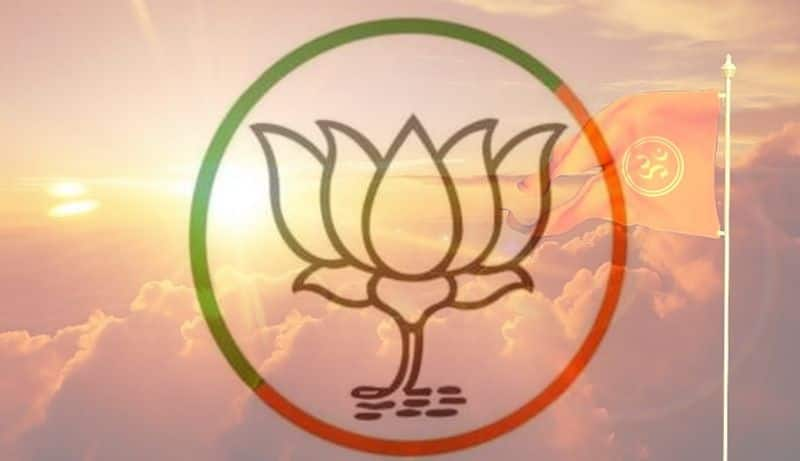Neglecting the core constituency of the BJP while also not proceeding with break-neck speed in economic reforms generating millions of jobs was a blunderous strategy; Narendra Modi could blend emotion and economy wonderfully in Gujarat, but Shivraj Singh Chouhan, Vasundhara Raje and Raman Singh do not possess even a shade of NaMo's charisma
People of five states have spoken. The BJP has lost Chhattisgarh and Rajasthan to Congress. Madhya Pradesh has gone to the wire. Has the BJP lost its sheen and appeal with the people?
The situation requires the BJP to take a hard look at its strategy and narrative-setting. Rather than attributing the debacle to Congress’s resurgence because of prolonged anti-incumbency, the BJP must look inwards at the political story it told the voters. Was the famed mix of development and Hindutva junked by the party’s over-confident regional bigwig like Shivraj Singh Chauhan, Raman Singh and Vasundhara Raje?
A heady cocktail, if one recollects, of the two — a promise to develop India and serve the cause of Hinduism via political Hindutva — was what had given PM Narendra Modi an enduring sheen in the 2014 general elections. The BJP had swept to power.
Missing the saffron bus
Although the BJP pressed its Hindutva icons such as Uttar Pradesh chief minister Yogi Adityanath for campaigning in some seats, all the three CMs stuck to praising only their various schemes and refuse to address the core Hindutva voter or fire up its cadre. Raman Singh, for instance, failed to reinvent himself beyond the success of his more than decade-old public distribution system reforms.
The BJP also failure to utilise a growing surge of sentiments, especially in the Hindi heartland, for building of the Ram Mandir in Ayodhya. So, it failed to effect a Hindu consolidation despite a vocal pro-Ram temple campaign emerging across India led by the VHP and the RSS.
However, since in all three states it was a bipolar contest, Muslims voted en masse for the grand old party.
Missing jobs and temples
Chouhan was only too happy to talk about his development and social welfare schemes, such as Ladli Lakshmi Yojna, Kanyadan Yojna, Jananai Suraksha Yojana and 50 percent reservation for women in panchayats. No buzz around Hindutva could be created of the magnitude of, if one remembers, the spat between Adityanath and then Karnataka chief minister Siddaramaiah during the assembly polls there.
The CM, however, failed to answer for high employment among youth in the state, especially in urban areas.
In Rajasthan, Vasundhara Raje went a step further. Her government demolished temples for development.
A part of the Gorakhnath temple was razed in March this year to make way for a road. Adityanath had urged the Jaipur Development Authority not to flatten the temple that comes under the aegis of the Goraksh Peeth back in 2015 while the state government was undertaking its first drive to demolish temples to make way for the Metro Rail. The demolition drive had not gone down well with the RSS too.
Modi, as CM of Gujarat, had pulled it off. But Raje is no Modi. She does not have the stature and respect among Hindutva voters to carry off a demolition drive of shrines in the name of development.
While Raje kicked off her campaign from the Charbhuja temple in Rajsamand — she had started her two yatras while in Opposition in 2003 and 2013 from here — people had taken offence at her remembering the temple only in the election season. The temple was touched up and quick fixes added just a couple of days before her visit.
The silent grudge
While Raje proudly touted her schemes on education and employment generation, perhaps the voter grouse remained.
In Chhattisgarh Raman Singh, the ‘silent performer’, harped on growth and development in contrast to his fight against Maoist terror. He also focused on growth and welfare. He reminded different sections of voters, especially the poor, of his welfare schemes, such as the really efficient PDS and his good governance.
While the digits of politics might have changed from the Nehru and Gandhi times, people have always been bound to parties via strong emotional narratives. The BJP’s story — development with Hindutva — needs to be harmonised into a more coherent whole.
Last Updated Dec 11, 2018, 8:36 PM IST











![Salman Khan sets stage on fire for Anant Ambani, Radhika Merchant pre-wedding festivities [WATCH] ATG](https://static-ai.asianetnews.com/images/01hr1hh8y86gvb4kbqgnyhc0w0/whatsapp-image-2024-03-03-at-12-24-37-pm_100x60xt.jpg)
![Pregnant Deepika Padukone dances with Ranveer Singh at Anant Ambani, Radhika Merchant pre-wedding bash [WATCH] ATG](https://static-ai.asianetnews.com/images/01hr1ffyd3nzqzgm6ba0k87vr8/whatsapp-image-2024-03-03-at-11-45-35-am_100x60xt.jpg)



